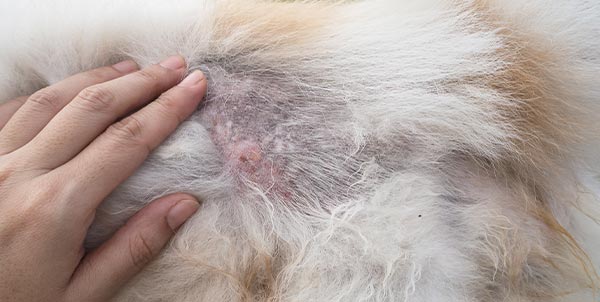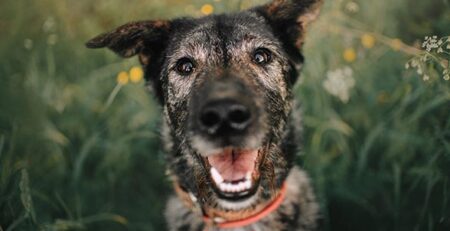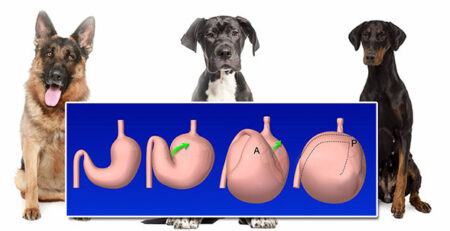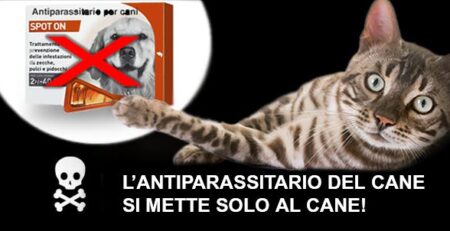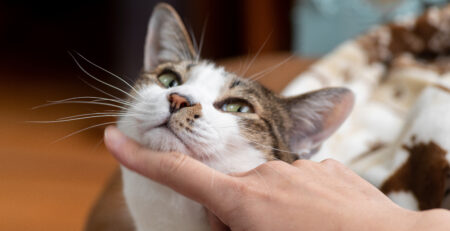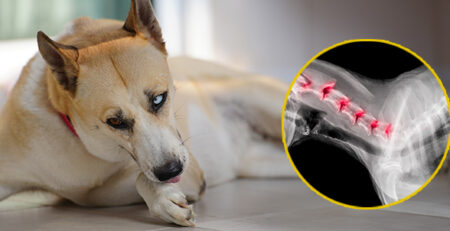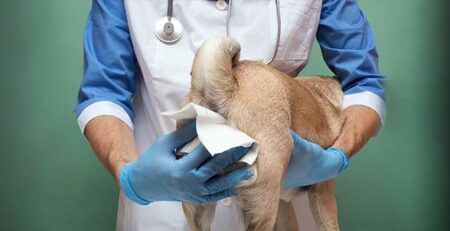Table of Contents
Food intolerance in the dog and cat: when the four-legged animal itches, scratches and sheds fur, it may be suffering from an adverse reaction to food. Here is what it is and how to handle it.
Food intolerance in dogs is a broad set of abnormal responses of the body related to the ingestion of a food or food additive that is commonly referred to as “allergy.”
These are actually real
adverse reactions to food
(abbreviated as RAC) that should be categorized as food allergy or food intolerance depending on whether or not they involve the animal’s immunological mechanisms.
Food allergy in the dog and cat
Food allergy is a specific form of RAC in which foods or components of certain foods, while totally harmless to most other dogs or cats, activate an animal’s immune system.
The allergy culprit, termed the allergen, triggers a veritable chain of reactions that leads to the formation of specific antibodies.
It affects both dogs and cats and can affect males and females equally, whether spayed or not.
It can occur at a young age (around 12 months) but also in old age (12 years).
Food intolerance in the dog and cat
Food intolerances, unlike allergies, do not cause involvement of the immune system; the reactions that are triggered are mainly metabolic and involve the digestive system.
Why dogs and cats become sensitized to a specific food
Allergy can occur when the stomach and intestines do not contribute to the proper digestion of proteins, carbohydrates, and analytical components of food.
Nutrients must be broken down to be assimilated by the body.
If this is not done properly, the immune system can mistake a normally harmless protein for a harmful substance, and that is how the allergic reaction is triggered.
When the body is found to be sensitized to a specific food, the allergy will occur again when the problem food is ingested and regardless of the amount taken.
Foods responsible for adverse reactions
Contrary to popular belief, chicken, this much-demonized food, is not the one and only culprit of allergies and intolerances.
Any component of a food that comes in contact with the cells of your dog or cat’s immune system can stimulate the body’s response.
As for dogs, the foods that usually trigger an allergy, we have: beef, chicken and lamb, dairy products, eggs, corn, wheat and soy.
These are basically the ingredients almost always found in dog foods i.e., those most commonly used in the formulation of all feeds.
Food additives (artificial colors and flavor enhancers) in pet foods may also pose an additional risk for allergies.
Symptoms of food allergy in dogs and cats
There are certain symptoms that, if present continuously and persistently, should alert you and prompt you to take the dog the cat to your veterinarian of choice.
The main symptom is the onset of itchy skin mainly affecting the muzzle, feet, ears, forepaws, axillary region, and the area surrounding the anus.
Itching often manifests itself violently, localized mainly to the ears and neck, and can lead to a variety of skin lesions, from simple redness(erythema), to local hair loss(alopecia), to crusty, dark, purulent lesions that represent chronic development due to continuous scratching.
Symptoms of food intolerance in dogs and cats
Frequent gastroenteric symptoms and diarrhea as well as weight loss should alert you.
Diarrhea refers not only to liquid or soft stools but also to their general increase in volume leading to increased frequency of defecation more than 3 times a day.
Liquid or semi-liquid feces can cause dehydration and progressive weakening of the animal in the long run.
Otitis can also be an expression of a food allergy or intolerance.
How to diagnose adverse food reactions in four-legged animals
The only way to accurately diagnose a food allergy or intolerance is by deprivative testing.
The veterinary trend is to use the food elimination test, which is to eliminate food ingested by the animal in the past three months and see if symptoms persist or cease.
The remedies and treatments for food allergy
The treatment of food allergy is basically to ‘avoid giving the animal the food source causing the allergic response.
Once the ingredients causing the problem are identified, they must be eliminated from the animal’s diet.
Eliminating “guilty” food items from the diet is the only long-term solution.
You have a choice of two options: feed the animal with a specific commercially available food line or with a homemade diet.
It is essential that the home diet be balanced and contain the right amount of ingredients, vitamins and minerals. For this reason, we recommend that you always consult your trusted veterinarian.
Predisposing factors
Other factors appear to be correlated with the occurrence of adverse food reactions in dogs and cats.
Subjects who have also demonstrated allergies to other triggers such as allergies caused by parasites such as flea or allergic dermatoses from environmental causes are more likely to develop a food allergy.
And again, any disease that can disrupt the intestinal barrier, such as hemorrhagic gastroenteritis or a genetic predisposition.
Some breeds are known for hypersensitivity skin reactions.
These include: Cocker, Labrador, Collie, Schnauzer, Shar pei, Poodle, West Highland, Boxer, Dachshund, Dalmatian, German Shepherd, Golden Retriever.
If you suspect your dog or cat has a food allergy or intolerance, schedule a specialist consultation with your veterinary dermatologist at La Veterinaria Clinic.
Clinic The veterinary clinic is open daily, including holidays, and with First Aid service from 8 pm to 8 am.
For the joy of seeing them happy.
Edited by Dr. Maria Cristina Aliano – Competent Veterinary Physician in Dermatology

